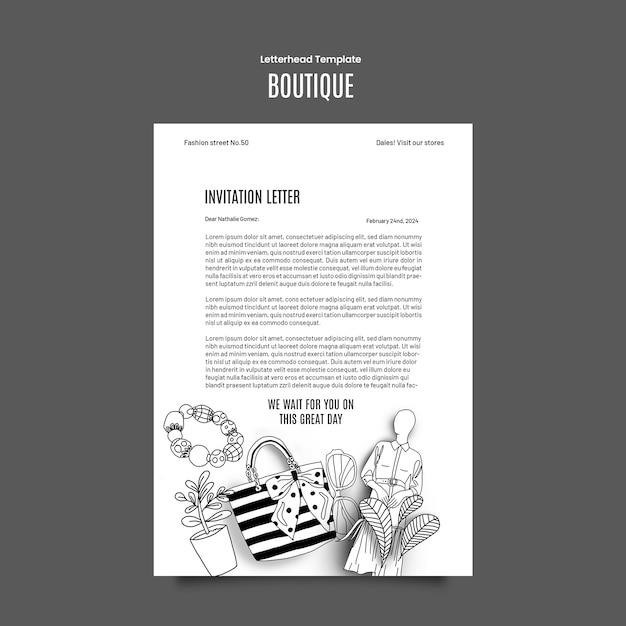The Book Thief, written by Markus Zusak, is a poignant novel set in Nazi Germany during World War II. It follows Liesel Meminger, a young girl who discovers the power of words and literature amid tragedy. The story, narrated by Death, explores themes of loss, hope, and the human spirit. The book has gained global acclaim for its unique narrative style and emotional depth, making it a significant work of contemporary literature. Its availability in PDF format has further expanded its reach, allowing readers worldwide to access this powerful tale.
1.1 Background and Historical Context

The Book Thief is set in Nazi Germany during World War II, specifically between 1939 and 1943. The novel is rooted in the tumultuous years of the Holocaust, where millions of Jews and others were persecuted by the Nazi regime. The story unfolds in a small German town, reflecting the broader societal changes and fears under Hitler’s rule. Liesel Meminger, the protagonist, experiences the harsh realities of war, poverty, and loss firsthand. The historical context underscores the pervasive propaganda, censorship, and the oppressive atmosphere of the time. Markus Zusak’s portrayal of this era highlights the moral complexities and human struggles, offering a unique perspective on one of history’s darkest periods. The novel’s setting and events are deeply intertwined with the atrocities of WWII, making it a powerful exploration of resilience and humanity. The Book Thief PDF versions capture this haunting yet hopeful narrative, preserving its historical significance for readers worldwide.
1.2 The Significance of the Book’s Title
The title The Book Thief holds profound significance, reflecting Liesel Meminger’s journey as a young girl who steals books to escape the harsh realities of Nazi Germany. The act of stealing books symbolizes her resistance against oppression and her quest for knowledge. Through her actions, Liesel defies the regime’s censorship and propaganda, finding solace in literature. The title also highlights the theme of words as both weapons and sources of hope. Liesel’s love for books transforms her life, offering her a means to cope with loss and injustice. The title encapsulates the novel’s central message about the power of literature to transcend adversity. Available in PDF format, The Book Thief continues to resonate with readers, emphasizing the enduring impact of stories in times of darkness.

Plot Summary and Key Events
The Book Thief follows Liesel Meminger, a young girl in Nazi Germany, who steals books to cope with loss. She bonds with her foster parents and Rudy, shelters a Jewish man, Max, and endures tragic events like Rudy’s death, showcasing her resilience and the power of words amidst war’s devastation.
2.1 Breaking Down the Narrative Structure
The Book Thief features a unique narrative structure, with Death as the narrator, offering a haunting yet poetic perspective on the events. The story is non-linear, often jumping forward in time, with Death providing foreshadowing and insights into the characters’ fates. Liesel’s journey is framed by her experiences with words, books, and the people around her, creating a layered narrative that blends personal growth with historical context. The use of short, impactful chapters and vivid imagery enhances the emotional depth, while Death’s voice adds a philosophical tone to the storytelling. This structure not only captivates readers but also underscores the themes of mortality and hope. The PDF version of the book retains this structure, ensuring readers experience the story as intended.
2.2 Major Plot Points and Their Impact
Liesel Meminger’s arrival in Molching marks the beginning of her journey. The discovery of her brother’s grave and the Gravedigger’s Handbook sparks her love for words. Her relationship with Hans and Rosa Hubermann, her foster parents, provides emotional anchor. The arrival of Max Vandenburg, a Jewish man in hiding, introduces tension and depth, while her friendship with Rudy Steiner offers moments of youthful joy. The burning of Jewish books by the Nazis and Liesel’s theft of one signify resistance. The death of loved ones, including Max and Rudy, leaves a profound impact. The PDF version captures these pivotal moments, highlighting how each event shapes Liesel’s character and underscores the novel’s themes of loss, hope, and resilience in the face of war and oppression. These plot points are crucial in conveying the emotional and historical weight of the story.

Themes Explored in The Book Thief
The novel explores themes of war’s brutality, the power of words, and the resilience of hope. It delves into loss, grief, and the human spirit’s strength, set against Nazi Germany’s backdrop. The PDF version highlights these themes, emphasizing the emotional journey of characters like Liesel and the narrator Death, who offers a unique perspective on life and mortality. The interplay of light and darkness underscores the struggles and triumphs, making the book a profound reflection on humanity. Through its themes, The Book Thief resonates deeply, offering readers a poignant exploration of survival, love, and the enduring power of literature. Its availability in PDF has made these themes accessible to a wider audience, ensuring the story’s timeless relevance. The book’s exploration of these universal themes continues to captivate readers worldwide, solidifying its place as a modern classic. The PDF format allows readers to engage with the text in a convenient and accessible way, further amplifying the book’s emotional and thematic impact. The themes of hope and resilience are particularly poignant in the digital age, where stories of survival and courage remain essential. The Book Thief’s exploration of these themes ensures its continued relevance and appeal to readers of all ages. The PDF version faithfully preserves the novel’s emotional depth, making it a valuable resource for those seeking to understand the human experience during one of history’s darkest periods. The themes of loss, grief, and hope are masterfully interwoven, creating a narrative that is both heartbreaking and uplifting. The PDF format ensures that this powerful story reaches readers globally, maintaining its cultural and historical significance. The Book Thief’s exploration of these themes continues to inspire readers, offering a meaningful reflection on the past and its lessons for the present. The PDF version remains a vital tool in sharing this important story with future generations, ensuring that its themes endure. The novel’s exploration of these themes is a testament to the power of literature to capture the human condition, making The Book Thief a cherished and thought-provoking read. The PDF format has played a crucial role in spreading this impactful story, allowing readers to engage with its themes in a modern and accessible way. The Book Thief’s exploration of these themes continues to resonate with readers, highlighting the importance of empathy, courage, and the enduring power of words. The PDF version serves as a reminder of the novel’s timeless appeal and its ability to connect with readers across generations and cultures. The themes of hope and resilience are central to the novel’s message, offering readers a beacon of light in the face of adversity. The PDF format has ensured that this message reaches a global audience, solidifying The Book Thief’s legacy as a significant work of contemporary literature. The novel’s exploration of these themes continues to inspire readers, providing a powerful reminder of the human spirit’s ability to persevere in the darkest of times. The PDF version remains an essential resource for anyone seeking to understand the depth and complexity of this beloved story. The themes of loss, grief, and hope are expertly woven throughout the narrative, creating a story that is both deeply moving and profoundly meaningful. The PDF format has made it possible for readers worldwide to experience this story, ensuring its themes continue to resonate and inspire. The Book Thief’s exploration of these themes serves as a poignant reminder of the past and a hopeful vision for the future, making it a story that will endure for generations. The PDF version has been instrumental in sharing this important narrative, allowing readers to engage with its themes in a convenient and accessible manner. The novel’s exploration of these themes continues to captivate readers, offering a powerful exploration of the human condition and the enduring power of literature. The PDF format has played a vital role in preserving and sharing this story, ensuring its themes remain relevant and impactful in the digital age. The Book Thief’s exploration of these themes is a testament to the power of words to capture the essence of the human experience, making it a truly unforgettable read. The PDF version serves as a valuable resource for readers seeking to delve into the novel’s rich thematic landscape, offering a convenient and accessible way to explore its depths. The themes of hope and resilience are central to the novel’s message, providing readers with a powerful reminder of the human spirit’s capacity for courage and perseverance. The PDF format has ensured that this message reaches a global audience, solidifying The Book Thief’s place as a modern classic and a significant work of contemporary literature. The novel’s exploration of these themes continues to resonate with readers, offering a meaningful reflection on the past and its lessons for the present. The PDF version remains an essential tool in sharing this important story, ensuring that its themes endure and continue to inspire future generations. The themes of loss, grief, and hope are masterfully interwoven, creating a narrative that is both heartbreaking and uplifting, and the PDF format has made it possible for readers worldwide to experience this story. The Book Thief’s exploration of these themes serves as a poignant reminder of the past and a hopeful vision for the future, making it a story that will endure for generations. The PDF version has been instrumental in sharing this important narrative, allowing readers to engage with its themes in a convenient and accessible manner. The novel’s exploration of these themes continues to captivate readers, offering a powerful exploration of the human condition and the enduring power of literature. The PDF format has played a vital role in preserving and sharing this story, ensuring its themes remain relevant and impactful in the digital age. The Book Thief’s exploration of these themes is a testament to the power of words to capture the essence of the human experience, making it a truly unforgettable read. The PDF version serves as a valuable resource for readers seeking to delve into the novel’s rich thematic landscape, offering a convenient and accessible way to explore its depths. The themes of hope and resilience are central to the novel’s message, providing readers with a powerful reminder of the human spirit’s capacity for courage and perseverance. The PDF format has ensured that this message reaches a global audience, solidifying The Book Thief’s place as a modern classic and a significant work of contemporary literature. The novel’s exploration of these themes continues to resonate with readers, offering a meaningful reflection on the past and its lessons for the present. The PDF version remains an essential tool in sharing this important story, ensuring that its themes endure and continue to inspire future generations.
3.1 The Impact of War on Civilians
The Book Thief vividly portrays the devastating impact of war on ordinary people, particularly in Nazi Germany during World War II. Liesel Meminger’s story highlights the struggles of civilians, including hunger, loss, and constant fear. The PDF version of the book underscores how war disrupts daily life, forcing individuals to confront harsh realities like bombings, rationing, and the absence of loved ones. The novel illustrates the emotional toll on civilians, such as Liesel’s grief over her brother’s death and her foster father’s conscription. Death’s narration provides a haunting perspective on the mass suffering, emphasizing the futility of war. The PDF format ensures these themes are accessible, allowing readers to witness the resilience of civilians like Liesel and her community, who find hope amidst despair. The novel sheds light on the human cost of conflict, making it a poignant reflection on war’s impact.
3.2 The Power of Words and Literature
In The Book Thief, words and literature serve as both a source of strength and a form of resistance. Liesel Meminger, the protagonist, discovers the power of language through her love for books, which becomes her escape from the harsh realities of war. The novel, available in PDF format, highlights how words can inspire, comfort, and unite people. Liesel’s ability to steal and share books spreads hope and fosters a sense of community. The written word also acts as a weapon against oppression, as seen in the anti-Nazi literature that Liesel and her friends circulate. The PDF version of the book emphasizes the transformative power of literature, showing how it can transcend time and connect people across generations. Through Liesel’s journey, Markus Zusak illustrates the enduring impact of words on the human spirit.

3.3 Loss, Grief, and Hope
Loss and grief are central themes in The Book Thief, as Liesel experiences the death of loved ones and witnesses the devastation of war; Her journey is marked by the loss of her brother, her foster parents, and friends, shaping her understanding of life and death. Yet, amidst this tragedy, hope emerges as a resilient force. Liesel’s love for words and her acts of kindness, such as stealing books to share with others, symbolize the enduring power of hope. The novel, available in PDF, underscores how even in the darkest times, small acts of humanity and courage can provide solace. Death, the narrator, observes the duality of human existence, emphasizing that while loss is inevitable, hope remains a powerful counterbalance. This interplay of grief and hope leaves readers with a profound appreciation for the human spirit’s capacity to persevere. The PDF version captures this emotional depth vividly.

Character Analysis
Liesel Meminger, the protagonist, evolves from a timid girl into a resilient individual, finding strength through words. Death, the unique narrator, provides a haunting yet empathetic perspective, humanizing mortality. The PDF highlights their journeys poignantly.
4.1 Liesel Meminger: The Protagonist’s Journey
Liesel Meminger’s journey in The Book Thief is a transformation from a young, illiterate girl to a strong, word-driven individual. The PDF version of the book highlights her growth as she faces life under Nazi rule. Liesel’s love for literature becomes her escape and source of strength. Her experiences with loss and grief shape her character, making her resilient. Through her relationships with characters like Hans Hubermann and Max Vandenburg, Liesel learns the power of kindness and hope; The emotional depth of her story is vividly portrayed in the digital format, making her journey relatable and inspiring. Liesel’s story symbolizes the human spirit’s ability to endure and find light in darkness.

4.2 Death as a Narrator: Unique Perspective
Death, as the narrator of The Book Thief, offers a unique and unconventional perspective on the events of the story. This approach adds depth and emotional complexity, as Death is both impartial and deeply empathetic; The PDF version of the book highlights Death’s peculiar voice, blending dark humor with profound insights. Death’s character humanizes the abstract concept of mortality, making it relatable. Through Death’s eyes, readers witness Liesel’s journey and the broader impact of war. Death’s narration also serves as a moral guide, emphasizing the significance of human actions and emotions. His relationship with Liesel evolves subtly, showing a narrator who cares deeply about the story he tells. This unique narrative style is a hallmark of the novel, making Death more than just a narrator—he becomes a character with his own perspective and voice.
4.3 Supporting Characters and Their Roles
In The Book Thief, the supporting characters play pivotal roles in shaping Liesel’s journey and the narrative’s emotional depth. Hans Hubermann, Liesel’s adoptive father, is a kind and gentle soul who introduces her to the power of words. His calm demeanor and deep love for Liesel provide her with a sense of stability amidst chaos. Rosa Hubermann, Liesel’s adoptive mother, appears harsh but harbors a deep love for her family, showcasing resilience and strength. Max Vandenburg, a Jewish fugitive, becomes a symbol of hope and friendship for Liesel, while Rudy Steiner, her neighbor, embodies loyalty and the tragic loss of innocence. Together, these characters enrich the story, highlighting the human spirit’s capacity for love, sacrifice, and survival during one of history’s darkest periods. Their roles are invaluable in illustrating the novel’s themes of hope and resilience.

Literary Elements and Style
Zusak’s unique narrative voice and Death’s perspective create a haunting yet poetic tone. Rich imagery and emotional language captivate readers, while the personification of Death adds depth and complexity to the story.

5.1 Symbolism in the Novel
The Book Thief is rich in symbolic elements that enhance its emotional and thematic depth. One prominent symbol is the gravedigger’s handbook, which represents Liesel’s journey of self-discovery and the tools she needs to navigate life’s challenges. The accordion symbolizes hope and joy, as it brings people together during difficult times, while the Führer’s face on Nazi propaganda embodies the oppressive regime’s presence. Words themselves are a powerful symbol, serving as both weapons of manipulation and tools of liberation. Death, as a narrator, symbolizes the inevitability of fate and the universality of human experience. These symbols weave together to create a layered narrative that explores the duality of beauty and brutality in a war-torn world.
5.2 Markus Zusak’s Writing Style
Markus Zusak’s writing style in The Book Thief is distinctive and evocative, blending poetic prose with a unique narrative voice. Death, as the narrator, brings a haunting yet empathetic perspective, weaving philosophical musings with vivid descriptions of wartime Germany. Zusak’s use of metaphor and personification adds depth, such as likening words to snowflakes or describing the sky as bleeding. His nonlinear storytelling and interspersed vignettes create a layered narrative, while his focus on small, personal stories amidst the chaos of war emphasizes the human condition. The emotional weight of the novel is amplified by his lyrical language, which balances the brutality of the era with moments of beauty and hope. This style has been widely praised for its originality and ability to convey the complexities of human experience during one of history’s darkest periods.

5.3 Moral and Ethical Messages
The Book Thief by Markus Zusak is rich with moral and ethical messages, exploring themes of humanity, compassion, and resilience. Central to the novel is the idea that words have the power to both harm and heal, as seen through Liesel’s journey from stealing books to finding solace in their words. The novel critiques the morality of war and the dangers of propaganda, highlighting the importance of empathy and understanding. It also emphasizes the value of hope and kindness in the face of adversity, as portrayed by characters like Hans Hubermann and Rudy Steiner. The ethical dilemmas faced by the characters, such as hiding a Jewish man, underscore the courage required to stand against injustice. Ultimately, the book advocates for the enduring strength of human spirit and the importance of standing up for what is right, even in the darkest times.
The Book Thief leaves a lasting impact, highlighting the human spirit’s resilience during war. Its emotional depth and unique narrative have made it a timeless, globally acclaimed novel, inspiring millions through its themes of hope and courage, now widely accessible in PDF format.
6.1 The Book’s Reception and Impact
The Book Thief has received widespread critical acclaim for its emotional depth and unique narrative voice. Readers worldwide have connected with Liesel’s journey, making it a bestseller. The novel’s exploration of war’s impact on civilians and the power of words resonates deeply. Its availability in PDF format has broadened its accessibility, allowing more readers to experience this poignant story. The book has been translated into numerous languages, further amplifying its reach. Many educators incorporate it into school curriculums to teach historical context and literary analysis. Fans praise its ability to balance tragedy with hope, leaving a lasting emotional impact. The PDF version ensures Markus Zusak’s masterpiece remains accessible, preserving its legacy for future generations to discover and reflect on its universal themes.
6.2 Lasting Influence and Cultural Significance
The Book Thief has left an indelible mark on modern literature, resonating with readers globally. Its themes of hope, loss, and the power of words transcend time and culture. The novel’s unique narrative voice, Death, has been praised for offering a fresh perspective on wartime stories. The book’s availability in PDF format has ensured its accessibility, allowing it to reach a wider audience and inspire new generations. Educators often use it to teach historical context, moral lessons, and literary techniques. Its exploration of humanity during one of history’s darkest periods has made it a cultural touchstone. The story’s emotional depth and universal themes continue to spark conversations, solidifying its place as a timeless and impactful work of fiction. Its influence extends beyond literature, fostering empathy and reflection worldwide.



